WITH UNSUNG LEADERS -Stories of behind-the-scenes leaders who take on challenges for a better future-
What Is the Key to Next-Generation Semiconductor Development as Envisioned by Prof. Kuroda of the University of Tokyo and Resonac?
February 6, 2023

Semiconductors made in Japan accounted for more than half of the world market share in sales in the 1980s, but then followed a downward trend, and are now in the single-digit percentage range. Lagging behind the high-performance advances in South Korea, Taiwan, and the United States, the Japanese semiconductor industry, which has been facing headwinds for nearly 40 years, is now starting to see a tailwind. At the center of this trend is Prof. Tadahiro Kuroda, who launched the Systems Design Lab (d.lab) at the University of Tokyo in 2019.
Prof. Kuroda works on the development of next-generation semiconductors through industry-academia collaboration under the slogan of “democratization of semiconductors,” while Hidenori Abe, Head of the R&D Center at Resonac’s Electronics Business Headquarters, leads the development of semiconductor packages with the keyword “co-creation.” In this two-part article, we interviewed them about the future of Japanese semiconductors and the human resources that the industry will require in the future.
What Is the Key to the Revival of the Japanese Semiconductor Industry?
Resonac has been participating in d.lab since the days of Resonac’s predecessor, Showa Denko Materials. First of all, Prof. Kuroda, please tell us about d.lab where you serve as the director of the center.
Kuroda: d.lab is a place of open innovation for engineers involved in the design and manufacture of semiconductors. Since its launch in 2019, d.lab has gained the participation of many semiconductor-related companies, including Resonac, and has been working on the development of next-generation semiconductors in cooperation with various electronic engineering laboratories at the University of Tokyo.
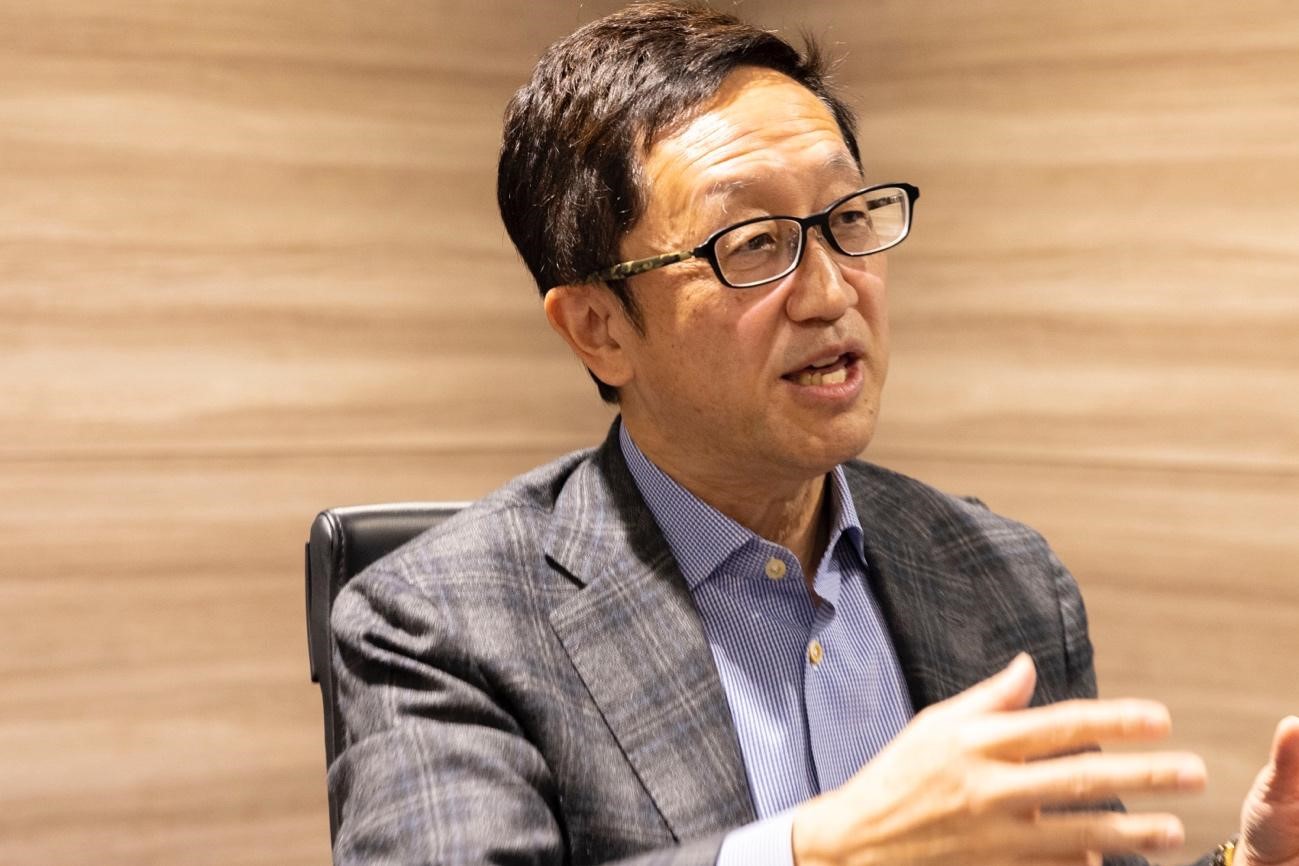
Tadahiro Kuroda, Professor at University of Tokyo Graduate School
Kuroda: In addition to sharing knowledge, we also have a lively exchange of opinions, and we incorporate the ideas that arise from that into actual designs and have prototypes manufactured by TSMC (*1), which d.lab is affiliated with. We aim to speed up the development of semiconductors with a system that enables open collaboration with academia and society.
We also established a semiconductor industry-academia collaboration base called “RaaS.” It is an industry-academia collaboration base for practical application of the technology developed by d.lab and development as a concrete business.
- *1 TSMC (Taiwan Semiconductor Manufacturing Company Limited): The world’s largest semiconductor contract manufacturer (foundry) headquartered in Taiwan. Its global share of the semiconductor manufacturing market is more than 60%.
Abe: The other day, I participated in a tour of the TSMC Japan 3DIC R&D Center sponsored by d.lab. We’ve always believed that it is important to have contacts with a wide range of companies in order to accelerate the open innovation of the Packaging Solution Center and we use d.lab as a place to meet new partner companies.
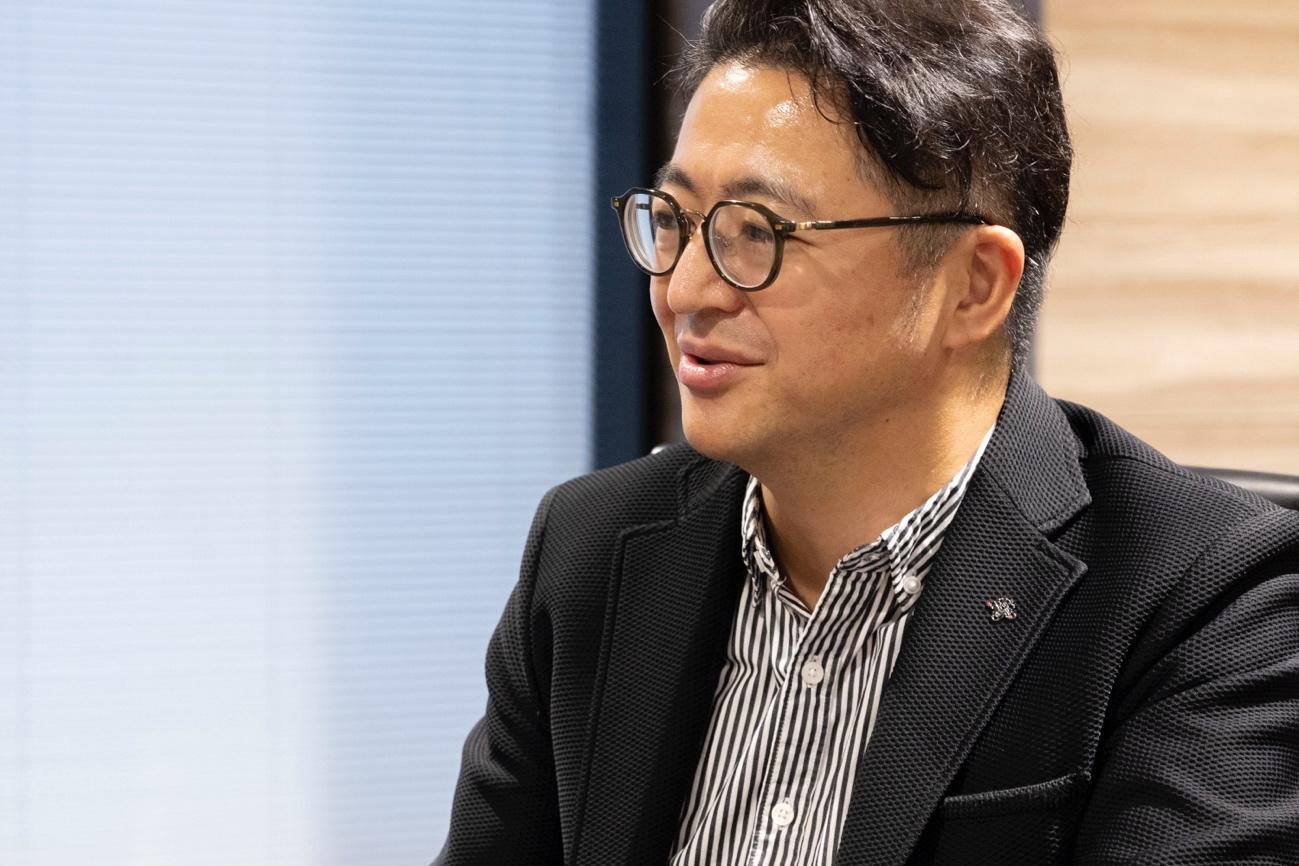
Hidenori Abe, Senior Director, Head of R&D Center, Electronics Business Headquarters, Resonac
Kuroda: Until some years ago, the fields of “materials” and “packaging,” where Resonac’s strengths lie, were quite far from the semiconductor design area that I specialize in.
In recent years, however, that distance has been shrinking rapidly. It will be difficult to further improve performance and efficiency unless we proceed with optimization of the entire package, rather than individual semiconductor chips. In the midst of this trend, I thought I should study more about packaging, so I visited the Packaging Solution Center and was surprised to find such an amazing place.
Abe: Thank you. I think that Japan should strategically concentrate on packaging and other parts of the “post-process” in the future. Until now, attention was focused only on the “pre-process” of how to make wafers and circuits, but the “post-process” will undoubtedly become more important in the future.
Kuroda: In such a situation, I am impressed that Resonac quickly focused on the “post-process” and owns the latest equipment and a wide network. You are in a very good position.
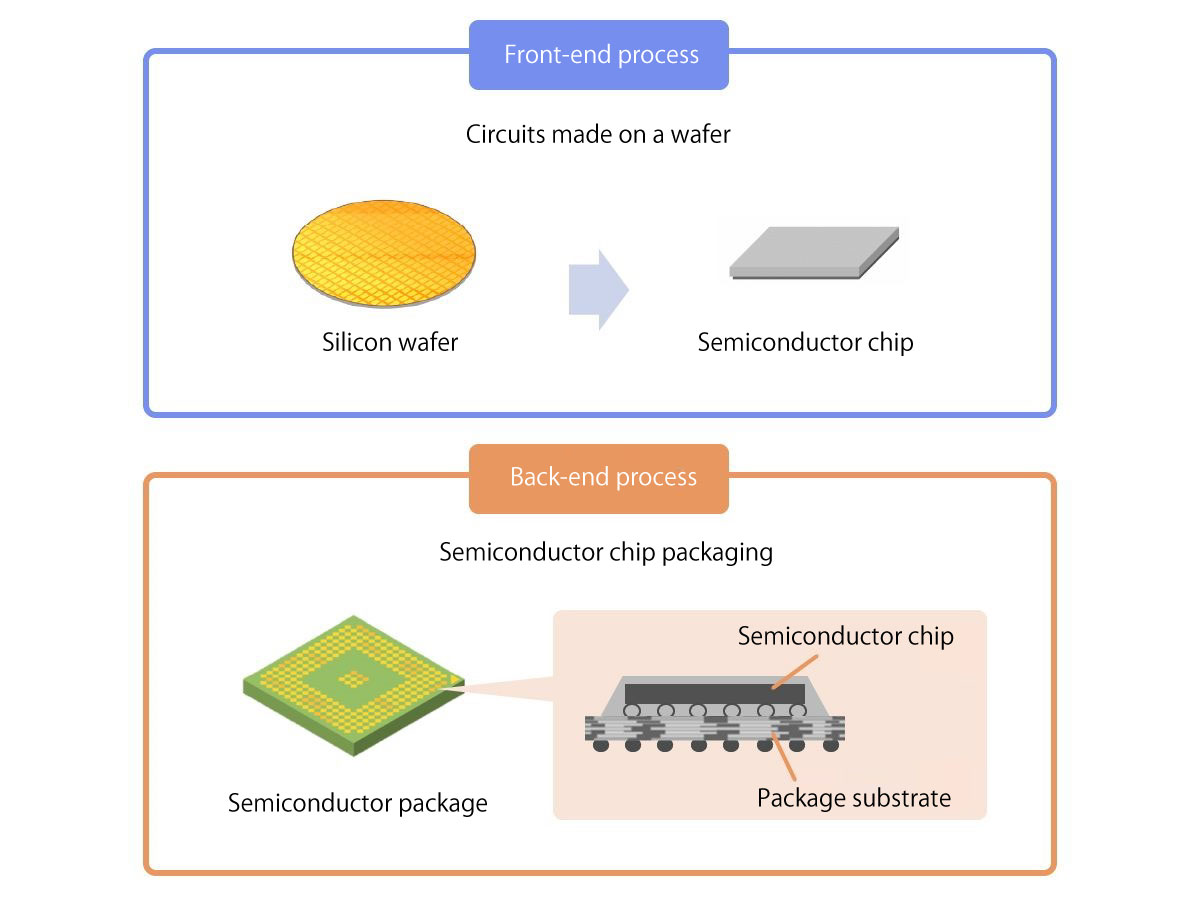
The semiconductor manufacturing process can be broadly divided into “front-end process” and “back-end process.”
Growing Interest in the Semiconductor “Post-Process”
Why is there a growing interest in the semiconductor “post-process” today?
Kuroda: One reason is that it is easy to take advantage of Japan’s strengths. Semiconductors were originally born in the United States, but Japan overtook the United States as we eagerly learned the manufacturing technology of semiconductors. In the early 1980s, Japan accounted for more than 50% of the world share of semiconductor sales at that time.
However, as the Japanese semiconductor industry became too strong, trade friction occurred between Japan and the United States, and in 1986, the Japan-US Semiconductor Agreement was signed under unfavorable conditions for Japan. With that as a turning point, the decline of Japanese semiconductors began, and the amount of production decreased significantly. Major electronics manufacturers withdrew from semiconductor manufacturing, and Japan’s global market share is now said to be in the single-digit range.
On the other hand, although semiconductor manufacturing itself has declined, Japan still has the power to compete with the rest of the world in the fields of materials and manufacturing equipment for making semiconductors. Manufacturers have a strong presence in the global market. And so, in order to revive the Japanese semiconductor industry, it would be wiser to take advantage of these strengths and target the post-process rather than the pre-process, where the power map has already been established.
Abe: In the field of semiconductor materials, Japanese manufacturers, including our company, maintain a global market share of 50%. When we look at only the post-process, it is more than 60%. We can say that we are still leading the world.
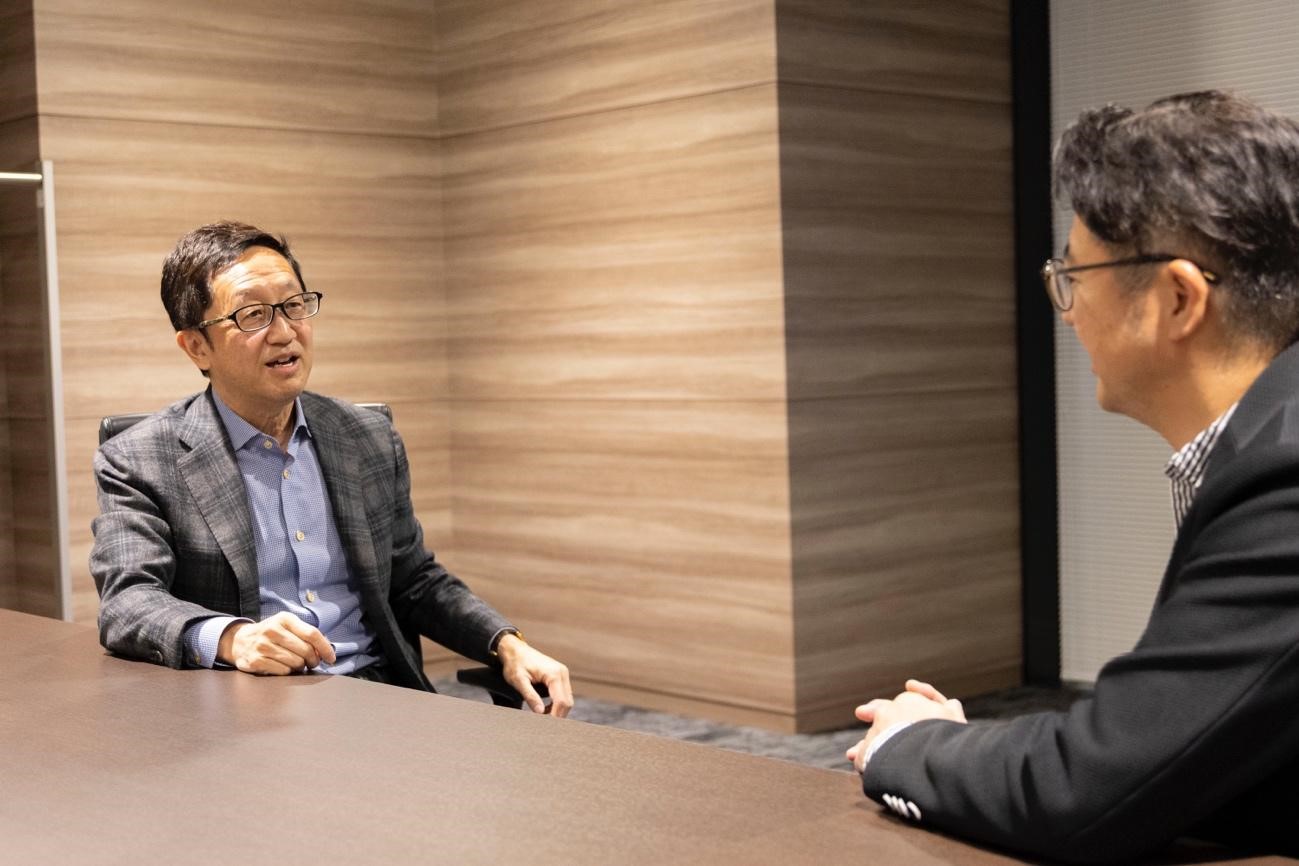
Kuroda: Another reason why expectations are high for the post-process is the technical problem of the “limit of miniaturization.” Until now, semiconductor development has aimed at “integration = higher performance” by narrowing the line width of the circuit on the chip.
According to the famous Moore’s Law (*2), the performance of semiconductors will increase exponentially: 100 times in 10 years, 1,000 times in 15 years, and 1 million times in 30 years. However, the line width has already reached the atomic level of “one-tenth the size of a virus.” In the future, it will be physically difficult to continue to improve performance with the same approach.
- *2 Moore’s Law: A prediction that “the number of elements mounted on an integrated circuit (the degree of integration) will double every two years.” It is said to have been proposed by Gordon Moore, the founder of Intel Corporation in the US.
That’s how the idea of “integrating the entire package” came up. At present, tens of billions of transistors can be integrated on a single chip, but researchers around the world are trying to integrate 100 billion to 1 trillion transistors in the entire package.
So rather than thinking about single chips, you are trying to combine multiple chips to increase the integration rate of the entire package?
Kuroda: Exactly. That is the global trend. You can say that the main battlefield of semiconductor development has expanded to include the entire package. Over the next decade, more and more attention will be focused on the materials and manufacturing equipment required for the development of next-generation packages.
Abe: The “Chiplet” technology, which is currently being researched and developed at Resonac’s Packaging Solution Center, combines multiple chips into a package to enhance functionality as a whole.
As Prof. Kuroda mentioned, competition in the development of semiconductor circuits is taking place in the world of 1 to 2 nanometers, approaching the size of atoms. Substrates, for example, are still being designed in tens of microns. There is still a lot of room for miniaturization in the area of packaging.
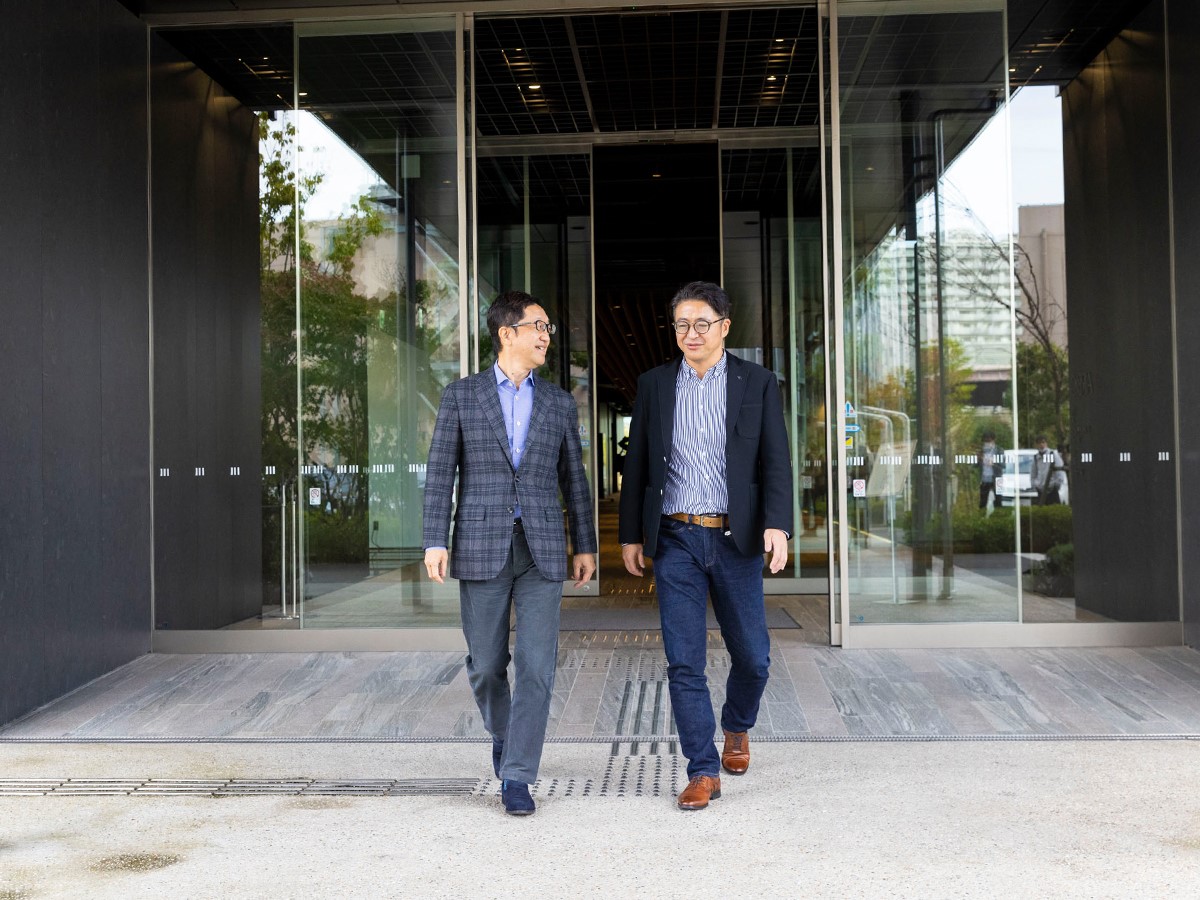
“Energy Saving” Is an Unavoidable Issue
Kuroda: Additionally, “energy efficiency” has also been required in the development of semiconductors in recent years. If substrate miniaturization that we have been talking about is achieved, the transmission distance between chips will be shortened, which will lead to a reduction in energy consumption as well.
By 2030, when AI will be everywhere, it is predicted that the power consumption of data centers in Japan will be more than 10 times the current level. Under such circumstances, semiconductors must be “green” in the future in order to achieve “sustainable growth.”
In order to improve functionality and transmission efficiency, I am also working on “3Dization” that integrates chips vertically, and more than ever before, there is a demand for packaging that takes into consideration even the smallest details, such as heat and electric current. In other words, we must now design semiconductors while keeping in mind the post-process.
Abe: The wave of sustainability is sweeping across various industries. Not only in Japan, but there is talk that a considerable percentage of the world’s electricity consumption will be used for servers in the near future. Therefore, it is becoming a must for the semiconductor industry as a whole to work on “energy saving.”
In fact, in 2022, the Semiconductor Climate Consortium (SCC) was launched. It is an initiative to accelerate the reduction of CO2 emissions around the world, and Resonac joined as a founding member. Discussions are underway on how materials manufacturers, equipment manufacturers, and semiconductor manufacturers can work together to reduce CO2 emissions. As a company that has strengths not only in “post-process” but also in “pre-process” semiconductor materials, we believe that by playing a leading role, we can take a step towards the revival of the Japanese semiconductor industry.
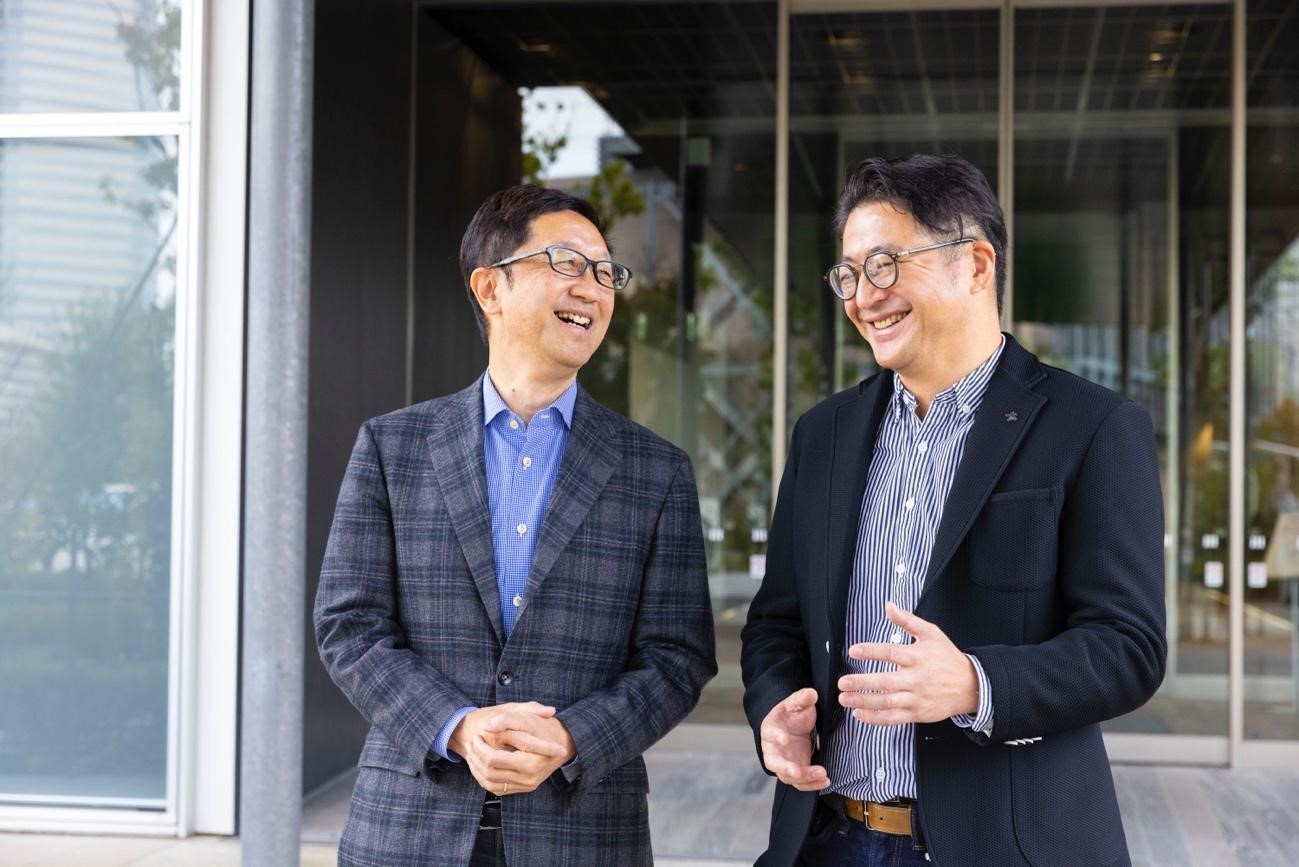
Tackling the Post-process in the Increasingly Complex Semiconductor Industry Through Co-creation
So far, you have talked about changes and trends in the industry. Please tell us your thoughts on what is necessary to revive the Japanese semiconductor industry in the future.
Kuroda: If each company only cares about its own success, it won’t lead to the development of the industry as a whole. Rather, the industry as a whole will shrink as more companies are eliminated. I think it’s the same as a forest that loses its biodiversity and becomes less vibrant. The idea of helping each other and evolving together is necessary for the Japanese semiconductor industry, and toward this aim, we should promote activities to create a “forest of co-creation.”
Abe: “Forest of co-creation” is a wonderful expression. I also feel that cooperation and initiatives that transcend corporate boundaries are essential, such as “co-creation” and “open innovation.”
Right now, we are also taking on the challenge of creating an ecosystem for the semiconductor industry. We believe that we can create a rich forest by collaborating with various companies and doing things that would be difficult for Resonac as a materials manufacturer to do alone.
The consortium “JOINT2” that we launched in 2021 also began from such aspirations. Companies related to the “pre-process” are also participating, and we are pursuing research to apply pre-process technology to packaging. In addition, materials manufacturers such as Tokyo Ohka Kogyo and Namics, which can be said to be Resonac’s competitors, are also participating, and we are working on the development and evaluation of materials and equipment required for the increasingly complex post-process. It is a truly team of diversity.
Kuroda: In the past, the Japanese semiconductor industry lost to the rest of the world because each company tried to put up a single big tree without being conscious of the forest. As a result, semiconductor manufacturers have been completely cut down. Fortunately, however, we still have a rich soil of “materials” and “equipment.” I hope that Resonac will play a central role in creating a diverse “forest of co-creation” on this soil.
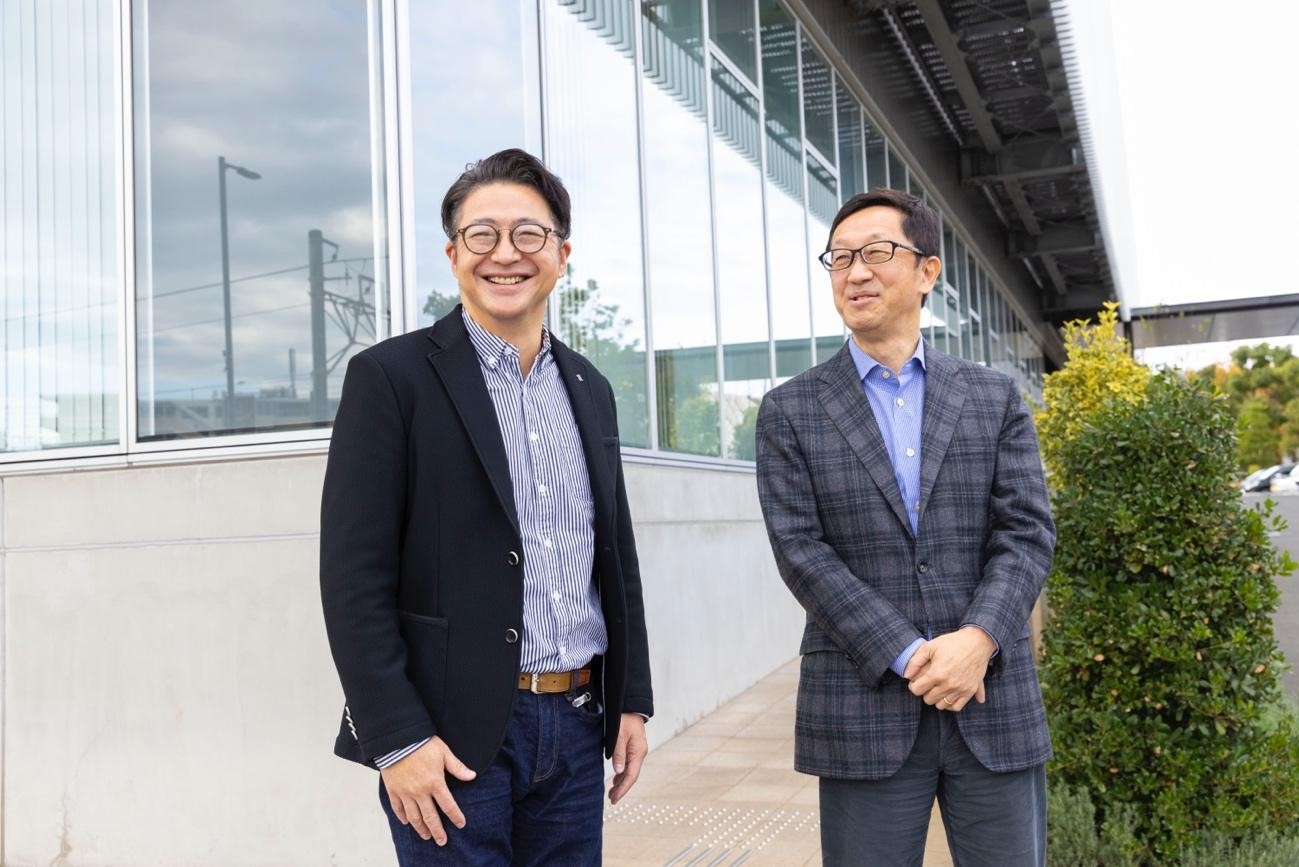
In Part 2, we asked about the characteristics required for human resources who can play an active role in the semiconductor industry in the future and what kind of approach is required from the corporate side.
Tadahiro Kuroda
Prof. Kuroda received his PhD in Engineering from the University of Tokyo in 1982 and joined Toshiba Corporation the same year. He was a visiting researcher at the University of California, Berkeley, from 1988 to 1990. He became an associate professor at Keio University in 2000, a full professor in 2002, and professor emeritus in 2019. He was the Mackay Professor at the University of California, Berkeley, in 2007. He became a professor at the University of Tokyo Graduate School and the director of System Design Lab (d.lab) in 2019, and the chairperson of RaaS in 2020. He has published over 300 papers, including 60 invited lectures and 30 books, and holds more than 200 patents. He has served as a member of the IEEE SSCS Administrative Committee, an IEEE Distinguished Lecturer, an IEEE/SSCS Region 10 Representative, and committee chair of A-SSCC. He is an IEEE Fellow, an IEICE Fellow, and committee chair of VLSI Symposia.
Hidenori Abe
General Manager of the Electronics Business Headquarters R&D Center, Resonac Corporation
After joining Hitachi Chemical Co., Ltd. in 1998, Abe was involved in the development of semiconductor sealing materials. He worked in the U.S. office for seven years and gained experience in technical services while obtaining an executive MBA. He was later involved in the establishment of the Packaging Solution Center and served as corporate marketing manager and the department head of the CMP slurry business. Currently, Abe is focusing his efforts on the development of overall semiconductor materials and related products, while promoting co-creation activities based on the Packaging Solution Center
